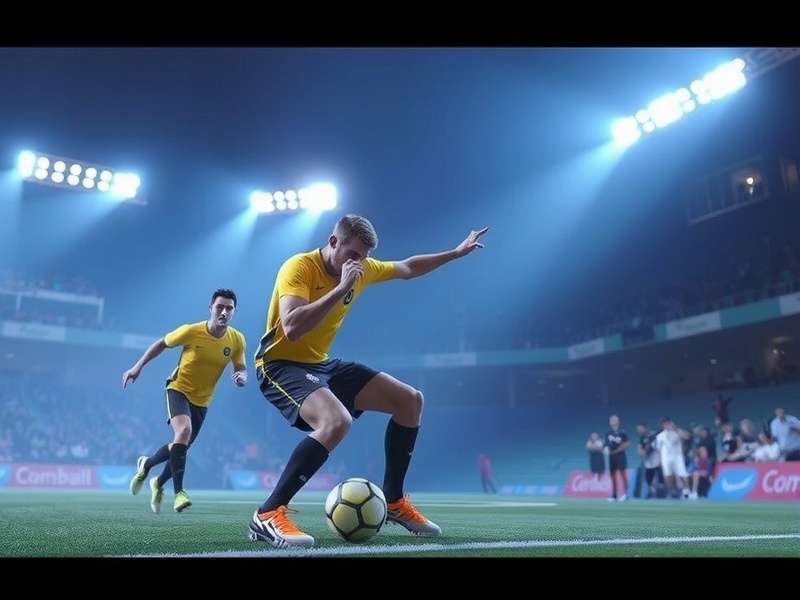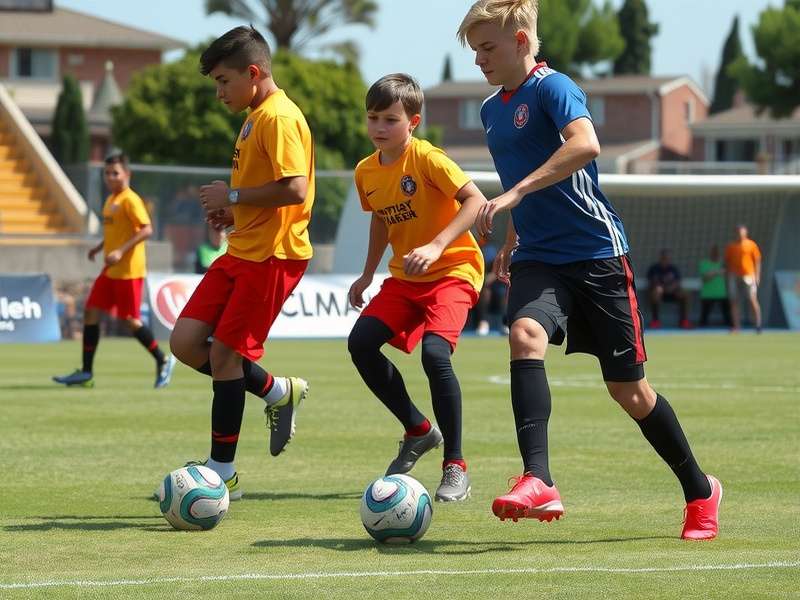Handball Glory Seekers: The Ultimate Encyclopedia
Discover the rich heritage, rules, and techniques of India's traditional handball sport phenomenon
Overview of Handball Glory Seekers
Handball Glory Seekersrepresents a distinctive variation of handball that has evolved within the Indian subcontinent, blending traditional elements with modern athletic principles. This dynamic sport combines elements of strategy, agility, and teamwork in a fast-paced environment that challenges both physical prowess and mental acuity.
The game is characterized by its emphasis on hand-eye coordination, strategic positioning, and rapid transitions between offensive and defensive play. Unlike conventional handball,Handball Glory Seekersincorporates unique cultural elements that reflect its Indian origins, making it a fascinating subject for sports enthusiasts and cultural historians alike.
Key Characteristics
Participants inHandball Glory Seekersdevelop not only physical fitness but also strategic thinking, leadership qualities, and cultural appreciation. The sport has gained popularity across various regions of India, with tournaments and competitions organized at local, regional, and national levels.

Historical Development
The origins ofHandball Glory Seekerscan be traced back to traditional Indian games that involved hand-based ball play. Historical records suggest that similar games were played in various forms across the Indian subcontinent for centuries, with regional variations reflecting local customs and available resources.
During the British colonial period, indigenous sports faced challenges as Western sports gained prominence. However, traditional games like the precursor toHandball Glory Seekerspersisted in rural areas and were often played during festivals and community gatherings. The resilience of these traditional forms laid the foundation for the modern version of the sport.
The formalization ofHandball Glory Seekersas a standardized sport began in the mid-20th century, as India gained independence and there was renewed interest in preserving and promoting indigenous cultural practices. Sports enthusiasts and physical education experts worked to systematize the rules and structure of the game while preserving its traditional essence.
Evolutionary Milestones
The 1970s marked a significant period forHandball Glory Seekers, with the establishment of formal competitions and the creation of governing bodies dedicated to promoting the sport. Regional tournaments began to attract participants from across states, leading to a gradual standardization of rules and playing techniques.
By the 1990s,Handball Glory Seekershad gained recognition as a distinct sport with its own identity, separate from international handball. This period saw the development of specialized training methods, coaching certifications, and the inclusion of the sport in school physical education programs in several Indian states.
Modern Developments
In the 21st century,Handball Glory Seekershas continued to evolve with technological advancements and changing sporting landscapes. The digital era has brought increased visibility to the sport through online streaming of tournaments, social media engagement, and digital platforms for player development.
Recent years have seen efforts to introduceHandball Glory Seekersto international audiences, with demonstration matches held during multicultural sporting events. These initiatives aim to share this unique aspect of Indian sporting culture while exploring opportunities for global participation and recognition.
Game Rules and Regulations
The official rules ofHandball Glory Seekershave been carefully developed to balance competitive integrity with the sport's traditional elements. Understanding these regulations is essential for players, coaches, and enthusiasts seeking to fully appreciate the strategic depth of the game.
Basic Game Structure
A standard match ofHandball Glory Seekersconsists of two periods of 25 minutes each, with a 10-minute halftime interval. Each team fields seven players on the court simultaneously: one goalkeeper and six outfield players. Substitutions can be made freely during designated substitution zones, similar to ice hockey.
The objective is to score by throwing the ball into the opponent's goal. The team with the most goals at the end of regulation time wins the match. In case of a tie, depending on the tournament rules, extra time or a penalty shootout may be used to determine a winner.
| Rule Category | Description | Penalty for Violation |
|---|---|---|
| Ball Handling | Players may hold the ball for maximum 3 seconds | Turnover to opposing team |
| Movement | Maximum 3 steps with ball without dribbling | Free throw for opponents |
| Physical Contact | Limited contact allowed; no pushing or holding | 2-minute suspension or penalty throw |
| Goalkeeper Rules | Special privileges within goal area | Penalty throw for violations |
| Scoring | Goal must completely cross goal line | No goal awarded |
Unique Rule Elements
Handball Glory Seekersincorporates several distinctive rules that set it apart from international handball. One notable feature is the "Glory Point" system, where teams can earn bonus points for goals scored in particularly challenging circumstances or through exceptional skill demonstrations.
Another unique aspect is the "Cultural Round" implemented in some tournament formats, where teams may earn additional points by incorporating traditional elements into their gameplay or demonstrating sportsmanship aligned with cultural values. These features reinforce the connection between the sport and its cultural roots.

Playing Techniques and Strategies
MasteringHandball Glory Seekersrequires developing a diverse set of technical skills and strategic understanding. Players must balance individual technical proficiency with cohesive team tactics to excel in this dynamic sport.
Fundamental Technical Skills
The foundation ofHandball Glory Seekerstechnique begins with proper ball handling. Players must develop soft yet secure hands to control the ball during rapid exchanges and under defensive pressure. The basic grip involves spreading fingers widely across the surface of the ball, providing maximum control for throwing and catching.
Throwing technique varies based on game situation. The standing throw provides accuracy for set shots, while jump throws generate power for scoring attempts. Specialized throws like the dive shot and fallaway shot allow players to score under defensive pressure, making them essential weapons in a player's arsenal.
Essential Movement Patterns
Effective movement without the ball separates elite players inHandball Glory Seekers. The sport requires constant changes of direction, speed variations, and strategic positioning. Key movement concepts include:
Change of Direction
Quick pivots and cuts to create separation from defenders
Lateral Movement
Side-to-side motion to maintain spacing and offensive flow
Explosive Acceleration
Bursts of speed to capitalize on defensive gaps
Advanced Strategic Concepts
Beyond individual techniques,Handball Glory Seekersdemands sophisticated tactical understanding. Team offensive systems typically employ structured attacks with specific player roles and coordinated movements. Common offensive setups include the 4-2 formation with two pivots, the 3-3 formation with balanced spacing, and specialized power play configurations.
Defensive strategy inHandball Glory Seekershas evolved significantly, with modern teams employing complex zone defenses, aggressive pressing systems, and hybrid approaches that adapt to opponent strengths. Communication and spatial awareness are critical components of effective team defense, requiring players to constantly process information and make rapid adjustments.

Cultural Significance and Impact
Handball Glory Seekersoccupies a unique position in India's sporting landscape, representing both athletic competition and cultural expression. The sport has developed traditions, rituals, and community connections that extend beyond the playing court, making it an important cultural phenomenon.
Community Integration
In many regions,Handball Glory Seekerstournaments coincide with local festivals and community celebrations. These events often feature opening ceremonies with traditional music, dance performances, and cultural displays that connect the sport to broader community identity. Local businesses frequently sponsor teams and events, further integrating the sport into community life.
The social aspect ofHandball Glory Seekersextends to intergenerational participation, with families often having multiple generations involved in the sport. This continuity helps preserve traditional knowledge while allowing for gradual evolution of playing styles and techniques.
Educational Value
Many educational institutions have incorporatedHandball Glory Seekersinto their physical education curriculum, recognizing its value in developing coordination, teamwork, and strategic thinking. The sport's emphasis on fair play and respect aligns with educational objectives beyond physical development.
Specialized coaching programs have emerged to train physical education teachers inHandball Glory Seekersinstruction, ensuring proper technique transmission and safety standards. These programs often include cultural components that contextualize the sport within India's sporting heritage.
Future Development
The ongoing development ofHandball Glory Seekersfaces both opportunities and challenges. Increasing media coverage and digital distribution have expanded the sport's visibility, while infrastructure development initiatives aim to make quality playing facilities more accessible across different regions.
Future growth strategies forHandball Glory Seekersinclude youth development programs, international exhibition matches, and potential inclusion in multi-sport events. These initiatives seek to balance preservation of traditional elements with adaptations that ensure the sport's relevance to new generations of participants.
Notable Achievements
Throughout its history,Handball Glory Seekershas produced remarkable athletes and memorable competitions that have contributed to the sport's legacy. Record-breaking performances, exceptional sportsmanship displays, and landmark tournaments have all played roles in shaping the identity and prestige of Handball Glory Seekers as a distinctive sporting tradition with deep cultural roots.